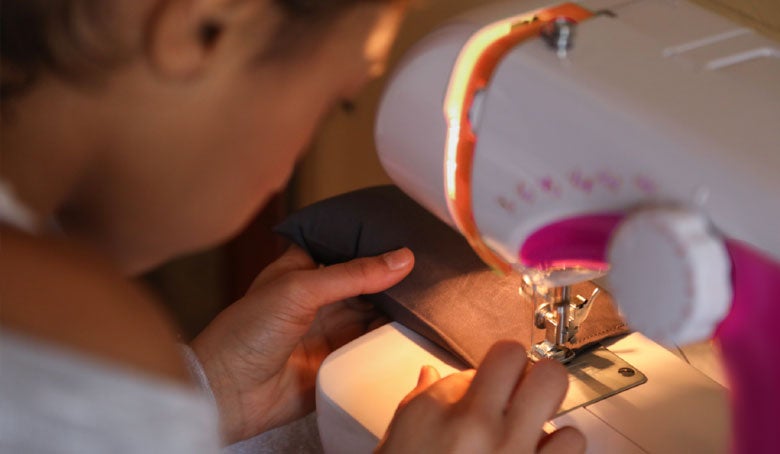Full confession — I’ve been stockpiling makerspace supplies in a closet for six years. It looked like a craft store had collided with an electronics outlet mall. While the makerspace movement has been alive and well in schools for years, I just couldn’t seem to take the leap from occasional making programs to a full-fledged makerspace. So much of what I was reading and hearing about at conferences was aimed at elementary and middle school libraries. How was I going to run a makerspace in a high school?
I soon ran out of time to think and was thrust into action when our district accelerated its plan to go 1:1 with Chromebooks within two years. I suddenly had two, soon-to-be-obsolete computer labs in the library. I knew this was the universe’s way of pushing me to clean out the closet and officially create a makerspace. Just after the panic set in, I was asked to share my vision in detail for a group of alumni looking to fund a project. (Insert additional panic here). In a very short time, I had space and funds falling into my lap, but I didn’t have my makerspace story ready. I was still too focused on the how and the closet full of supplies. Then came my lightning bolt moment — the question wasn’t about how I was going to run it; it was about why students were going to use it. By changing the question, I arrived at the answer, and the Trojan Entrepreneurship Center was born.
Why entrepreneurship? Our students will be more likely than any generation before to change jobs or participate in the gig economy, moving from job to job as independent contractors. We also know that companies such as Google have found that their employees need skills beyond the STEM fields, such as being a good communicator, problem-solver and critical thinker. We see the same competencies highlighted in the American Association of School Librarians’ National School Library Standards, specifically inquire, include, collaborate and explore. If this is the direction of the job market, then entrepreneurship is going to check all the boxes. Students also need to see a direct relationship between what we do in school and how the activity will pay off in the long run. If we can help students make items to resell or to use in marketing a service, the feedback from customers is immediate, meaningful and actionable. The revenue potential for the student is also a good incentive.
We asked the students what they need and want. I sent a survey to a sample of students asking them about what they enjoy doing outside of the classroom and what they wish there was time and space to do at school. Technology, food, art and spending time with friends emerged as popular themes. Many also wished they had more time for music. We are using the data to guide the purchasing and plans for the space. As the space begins to come together, we will form an advisory board of students and teachers to make equipment purchasing decisions and identify entrepreneurs who can talk to our makers about turning their hobbies and interests into business opportunities. In the future, we hope to make microloans available to students looking to start a business venture.
Students need to see a direct relationship between what we do in school and how the activity will pay off in the long run.
Students need to see a direct relationship between what we do in school and how the activity will pay off in the long run.
We reached out to the community. After the alumni group agreed to help us fund the Trojan Entrepreneurship Center, I applied for grant money from our community foundation, making sure to mention the buy-in from alumni. Many funders like to see buy-in outside of the library walls before they invest. When I started choosing equipment, I knew I would need help, so I turned to the education technology department at the University of Findlay, just one mile from our campus. By purchasing some of the same equipment, we’ve had help from the university faculty when projects haven’t gone as planned.
If funding has you reeling, organizations such as Service League, Kiwanis Club or Rotary Club may offer funding opportunities. For national grants, EBSCO has a list of grants and funding opportunities, and many vendors who sell makerspace items offer grant resources as well. Applying for large national grants can be daunting, but the more you try and the more you write, the easier applying will be.
A few tips:
- Remember that different organizations have different funding priorities, so know your audience.
- Be willing to break your makerspace creation into smaller projects, so that you can better match funders with their areas of interest.
- Focus on what students will be learning and doing.
- Be ready to measure. Funders are also going to want to know if the project is successful. Usage statistics, participation in classes and organized programs, and teacher and student feedback are a few ideas to get that information.
- Follow through. Keeping relationships strong may increase your chances of future funding, especially with local organizations.
- Reach out. If all this sounds like too much, reach out to someone in your district who has written successful grants in the past and take them out for coffee.
Our space is still evolving, as I hope it always will, but determining the why has made the path much clearer and the decision-making so much easier.
